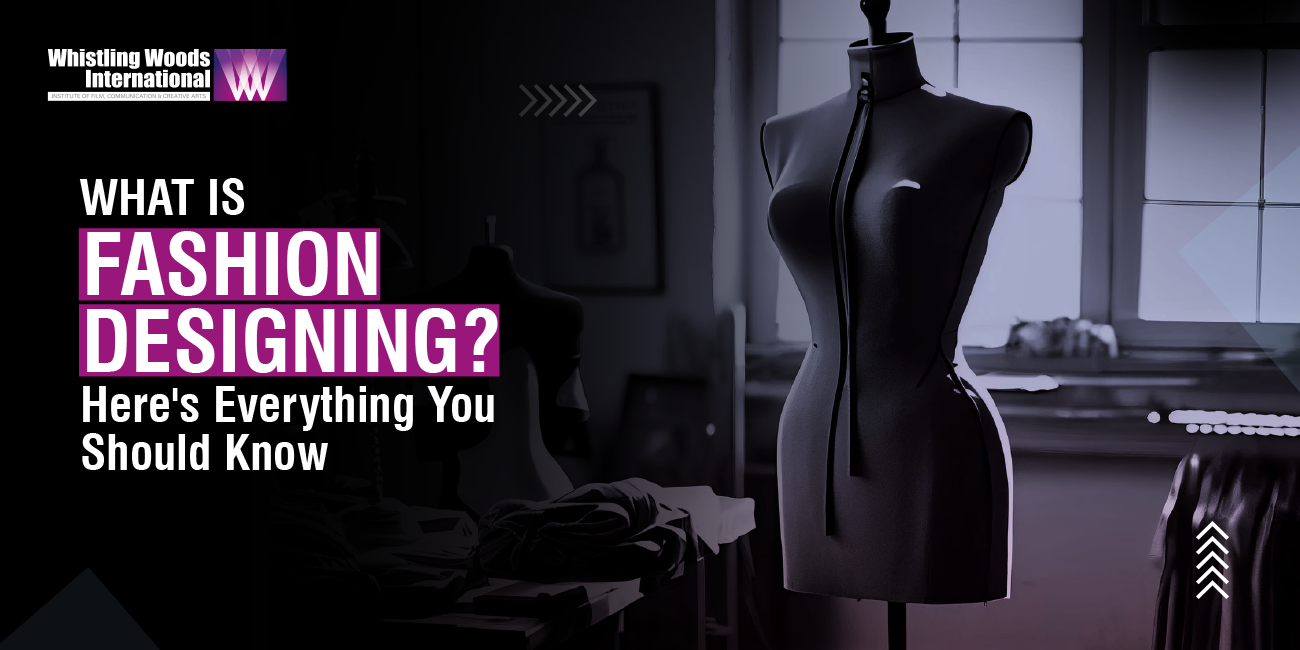Fashion design is the art and process of creating innovative and aesthetically pleasing clothing, accessories, and footwear. It involves translating creative concepts into tangible designs through a combination of sketching, pattern making, and garment construction.
India’s online fashion retail market is estimated to grow by USD 22.97 billion from 2022 to 2026 at a CAGR of 19%.
This growth resonates far beyond numbers, signifying a resounding boom redefining how fashion is conceptualised, consumed, and even created.
In this blog, we provide you with all the necessary information you need for your fashion design career and how to go forward with your fashion design education.
What Is Fashion Designing?
Fashion designers blend their artistic vision with a deep understanding of materials, textiles, and trends to produce clothing that reflects personal style and resonates with the broader cultural and social context. This multifaceted discipline encompasses not only the aesthetics of garments but also the technical aspects of fit, functionality, and manufacturing.
Fashion design plays a pivotal role in shaping how people express themselves through clothing and how they perceive and engage with the world of style.
What Does It Take To Be A Fashion Designer?
A successful fashion design career requires a blend of creativity, technical skills, perseverance, and a deep understanding of the industry. Here are some pointers:
- Creative Vision: Fashion designers must have a strong artistic vision and the ability to conceptualise unique and appealing designs.
- Formal Education: Acquiring formal fashion design education through a degree or diploma programme provides a strong foundation in design principles, pattern making, textiles, and industry insights. This education can also provide opportunities for internships and connections.
- Design Skills: Proficiency in sketching, pattern making, and garment construction is essential to bring designs from concept to reality.
- Understanding of Fabrics: Knowledge of various fabrics, their properties, and how they drape and behave is crucial for creating functional and aesthetically pleasing designs.
- Trend Awareness: Staying current with historical and contemporary fashion trends help designers create relevant and innovative designs.
- Attention to Detail: Precision in pattern making, sewing, and finishing details ensures the quality and fit of the final product.
- Communication Skills: Effective communication is vital to convey your design ideas to clients, manufacturers, and team members.
- Networking: Building relationships within the fashion industry can open doors for collaborations, partnerships, and exposure.
What Jobs Can You Pursue In A Fashion Design Career?
-
Fashion Designer
Job Role: Create innovative clothing and accessory designs, research fashion trends, and collaborate with manufacturers. Transform creative ideas into marketable products.
Demand: Demand is competitive, requiring inspired creativity and adaptability.
-
Fashion Illustrator
Job Role: Produce detailed fashion sketches and drawings to visually communicate design concepts. Collaborate with designers to refine ideas and bring them to life.
Demand: Steady demand for skilled illustrators in the fashion industry.
-
Pattern Maker
Job Role: Develop precise patterns and templates for garments based on the designer’s concepts. Ensure accurate sizing and fit, collaborating closely with designers and manufacturers.
Demand: Steady demand for pattern makers with technical expertise.
-
Fashion Merchandiser
Job Role: Analyse market trends, consumer behaviour, and sales data to curate product assortments. Coordinate with designers and retailers to ensure effective product presentation and promotion.
Demand: Strong demand for merchandisers who bridge design and business aspects.
-
Textile Designer
Job Role: Create original textile patterns and prints for fabrics used in clothing and accessories. Combine artistic skills with knowledge of fabrics and manufacturing processes.
Demand: Demand is stable for textile designers who offer unique and versatile patterns.
-
Fashion Stylist
Job Role: Curate outfits and looks for individuals, models, or media productions. Select clothing, accessories, and hair/makeup to convey desired aesthetics and messages.
Demand: Steady demand in the fashion, entertainment, and advertising industries.
-
Fashion Buyer
Job Role: Source and select clothing and accessories for retail stores or e-commerce platforms. Monitor market trends, negotiate with suppliers, and manage inventory to maximise sales.
Demand: Demand remains for skilled buyers with a keen eye for market trends and consumer preferences.
It’s Time To Start Your Fashion Design Career With Whistling Woods International
Embark on your journey towards a vibrant career in fashion design with Whistling Woods International (WWI) fashion design school. Our esteemed institution offers a comprehensive education that nurtures your creativity, hones your technical skills, and equips you with industry insights.
Our experienced faculty and industry collaborations ensure you receive a holistic learning experience that mirrors the dynamic world of fashion.
Fashion design courses offered by us:
- BDes in Fashion Design | (4 Years)
The WWI fashion design school offers an advanced four-year degree programme meticulously designed to offer students a thorough grasp of sophisticated ideas and methodologies within the realm of fashion.
Our fashion design education aims to inspire every student to cultivate their individual flair for imagination and originality, enabling them to gain the expertise, capabilities, and hands-on exposure necessary to achieve personal aspirations and establish a distinct identity as a designer.
Join us at Whistling Woods International and step confidently into the realm of your career in fashion design.

